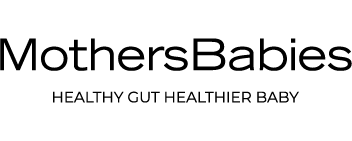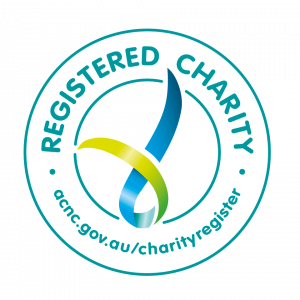Mothers, babies and how microbes play a critical role in the health of both.
By Sonja Armstrong
Scientifically reviewed by Fathalla Ali, Bsc MSc, MPH and PHD student UNSW
8 December 2020
You, me and baby make three. Not quite. You might be surprised to discover that your baby making activities are actually accompanied by a consortium of trillions of other contributors, in the form of microbes, that will have quite a say in the health of your child. Collectively known as microbiota, these bacteria, yeasts, fungi and viruses inhabit various microbiomes (enclaves of a sort) in, on and around the body. Depending on how the consortium is populated, it can enhance your child’s health or contribute to health problems that they may grapple with into adulthood.
The mother-baby connection is instrumental in this process. A phenomenon known as maternal transfer will influence the establishment of the baby’s own microbiome by transferring microbiota from mother to baby. Then from the moment of birth, environmental microbes will also exert their influence.
So what do microbiota do that’s so important? Here’s a basic job description, which they will perform to a better or worse extent depending on how the consortium is populated: they extract and create nutrients and other products that contribute to health or disease; they can ward off (or harbour!) pathogens and invaders, acting as guards and sentinels; and critically, they act as an educator or ‘programmer’. Microbes actually calibrate such things as the immune system, metabolism, digestion, fat deposition, nutrient and calorie extraction, hormone regulation and DNA expression.
A healthy microbiome plays a fundamental and critical role in programming your child’s health, including their immune system. A healthy immune system in turn supports healthy microbiome development and avoids dysbiosis (where there’s an imbalance in the microbial community) that will negatively impact health. Some examples include asthma, atopic dermatitis/eczema, hay fever, food allergies, necrotising enterocolitis, neurodevelopmental disorders, temperament and obesity.
The impacts of long term dybiosis and poor immune regulation can lead to the development of diabetes and cardiovascular disease in adulthood. While it’s one thing to conceptualise the connection between the baby’s microbiome and (increasingly) common childhood ailments such as eczema, it’s quite another to imagine that it could contribute to them growing into a portly adult with heart problems!
There are various points at which the baby’s microbiome is influenced in their journey from conception to early childhood, which we refer to as the first 1,000 days (see infographic).
The mother’s microbiome starts to influence your baby from the point of conception. And by microbiome we aren’t just referring to the gut microbiome with which you may be familiar. There are in fact various other microbiomes that have a role to play from conception to birth such as those of the vagina, uterus, mouth and even semen. Yes, these niches have their own microbiota and if they’re in dysbiosis, the can impact everything from your ability to conceive to whether you carry your baby to normal term.
The moment and method of birth is another point of impact. A baby born naturally will be imprinted by mother’s vaginal and faecal microbes while one delivered by C-section will be imprinted by maternal skin and hospital microbes. Associations have now been formed between C-section delivery and increased rates of asthma, allergies, autoimmune disorders and obesity.
Baby’s first foods will also have an impact. For example, the microbiome of breast-fed babies compared with formula fed babies, tends to have higher levels of a Bifidobacteria which studies have shown to benefit immune function.
As baby grows, the type and extent of skin-to-skin contact and the various environments they’re exposed to – suburban apartment, a rural area, nature, pets – all these provide opportunities for environmental microbes to become part of the consortium of microbiomes that will impact your child’s health.
The reason the window is important is because the education and programming role of these microbes takes place during the first 1,000 days, with some research suggesting that most of this function is pretty much accomplished by the time the baby is six months old.
This period therefore represents a wonderful window of opportunity to positively influence your baby’s microbiome. It’s also a time to be alert to potential consequences if those points of influence are compromised and what the research indicates can remedy the situation.
Some of these points of impact you may have control over, others not. Diet, lifestyle (including stress), use of antibiotics, mode of delivery, environmental exposure – where these are outside your control then the good news is that science is demonstrating that certain interventions, such as the considered use of probiotics and prebiotics (along with a healthy diet) can have positive health outcomes.
And it’s not just baby’s health we are concerned with. The microbiome can also impact mother’s health with adverse consequences including preeclampsia, gestational diabetes and excessive weight gain during pregnancy (which can also have a knock-on effect on the baby).
At MothersBabies we’re passionate about communicating compelling, evidence-based research. We regularly post articles that digest the latest research so that your journey into parenthood is fuelled with information that will help you, in consultation with your health care practitioners, make choices that will give your child the best start in life.
It’s a constantly evolving, dynamic field with fascinating new findings occurring at a rapid pace, so there will be plenty for us to share with you.
By way of a snapshot of what we will cover, take a look at the infographic which highlights the key factors that positively impact the microbiota, and by extension, both mother’s and baby’s health from conception to 1,000 days.
References:
https://www.ncbi.nlm.nih.gov/pmc/articles/PMC7019214/
https://www.ncbi.nlm.nih.gov/pmc/articles/PMC4658310/
https://www.ncbi.nlm.nih.gov/pmc/articles/PMC5869344/
https://jamanetwork.com/journals/jamanetworkopen/fullarticle/2728623
https://www.sciencedirect.com/science/article/abs/pii/S0889159114005157?via%3Dihub





